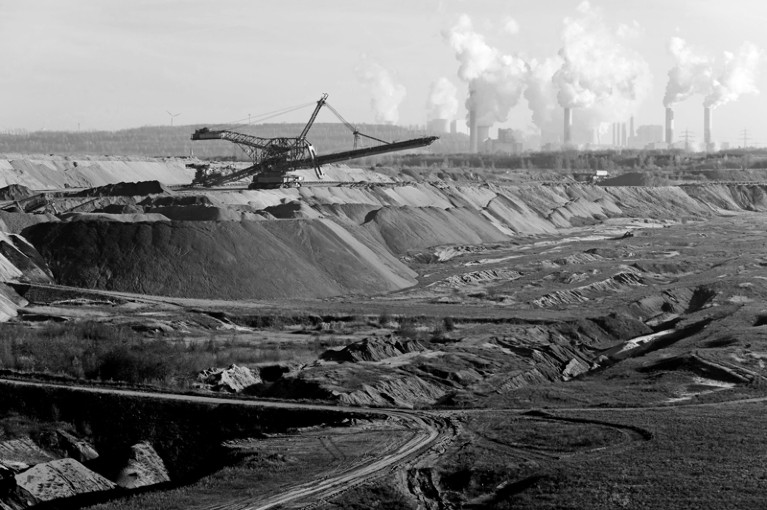
Emissions of minor greenhouse gases from the oil and gas industry might be higher than thought.Credit: imageBROKER/Alamy
When it comes to harmful emissions from the oil and gas industry, much of the focus tends to fall on methane, a potent greenhouse gas. But ethane and propane deserve scrutiny too.
Scientists know that ethane emissions rose during the early twentieth century and then began to decline in the 1970s as modern air regulations took effect. More recent monitoring suggests that the trend reversed in 2009, when atmospheric concentrations again began to rise, probably due to emissions from the expanding oil and gas industry, and particularly in the United States. Yet reconciling the atmospheric data with current emissions inventories has been tough.
This week in Nature Geoscience, researchers report progress (S. B. Dalsøren et al. Nature Geosci. http://dx.doi.org/10.1038/s41561-018-0073-0; 2018). The team simulated multiple emissions scenarios in an effort to reproduce observational data, including those gleaned from ice cores. They accounted for natural emissions from sources such as geological seeps and mud volcanoes, and plugged in detailed information about emissions from the fossil-fuel industry. The results suggest that the industry’s ethane and propane emissions have been drastically underestimated, and are two to three times higher than figures used by the Intergovernmental Panel on Climate Change.
That in itself is a concern, because the two gases contribute to smog — but the study also underscores troublesome questions about industrial emissions of methane, which are second only to those of carbon dioxide when it comes to warming the planet. Where there are ethane and propane being released, there tends to be methane too. The ratios vary across oil and gas fields — but, once understood, they can be used to differentiate industrial methane emissions from those from other sources, including livestock, rice paddies and wetlands. As it happens, atmospheric methane concentrations also resumed their historical rise in 2007, after a nearly decade-long plateau.
This rise, some scientists have argued, implies that US methane emissions are also underestimated — they could be as much as double the US government’s inventory — and that the fossil-fuel industry is largely to blame. But questions remain. Another line of research using carbon isotopes to determine methane’s source found no such rise in industrial emissions, and suggested that the culprit for spiking methane concentrations is more likely to be rampant agricultural expansion in the tropics.
Governments don’t need to know all the details before they act. The International Energy Agency estimates that the industry emits roughly 76 million tonnes of methane per year globally, and that three-quarters of those emissions could be eliminated with current technologies if companies fixed or replaced leaky equipment. Implementing just those measures that pay for themselves would be akin to reducing carbon dioxide emissions by 160 billion tonnes by 2100 — nearly 47 times the annual emissions of the European Union.
Sadly, the administration of US President Donald Trump is moving in the opposite direction, undermining rules intended to reduce methane emissions. So far, courts have blocked these efforts, but the battle is heating up. On 22 February, the US Bureau of Land Management proposed a rule that would loosen requirements on oil and gas companies to reduce methane emissions.
The message is getting through internationally. Last year, a coalition involving industry, academia and environmentalists launched a research initiative to better document where and how much methane is being emitted from oil and gas operations. In November, eight of the world’s major oil and gas producers committed to shoring up their operations. They understand the case for plugging leaks; now the United States must catch up.







